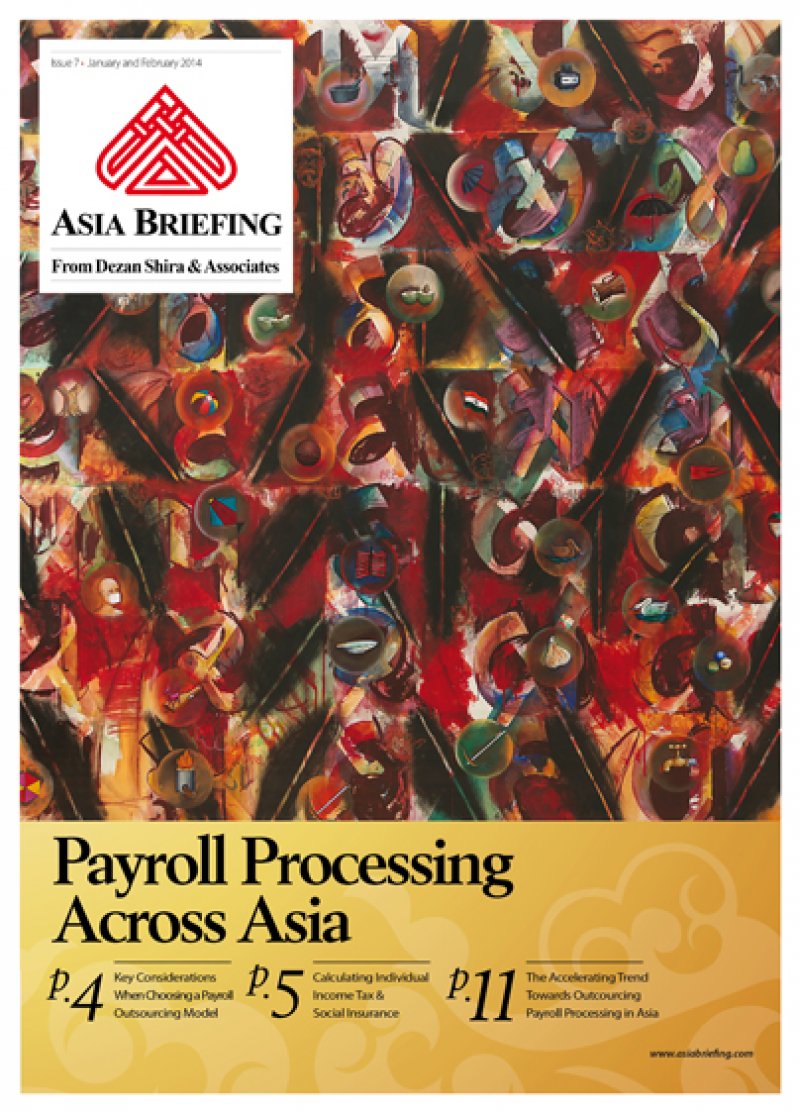
Payroll Processing Across Asia
Published: January 2014In Asia Briefing Magazine’s first issue of 2014, we provide a country-by-country introduction to how payroll and social insurance systems work in China, Hong Kong, Vietnam, India and Singapore. We also compare three distinct models companies use to manage their payroll across various countries with external vendors, and explain the differences among three main models: country-by-country, managed, and integrated models while highlighting some benefits and drawbacks of each.
No. of Pages: 12 pages
In this issue:
- Key Considerations When Choosing a Payroll Outsourcing Model
- Calculating Individual Income Tax & Social Insurance
- The Accelerating Trend Towards Outsourcing Payroll Processing in Asia
Collecting tax revenue and administering social insurance are two of the most fundamental roles of government. When establishing or operating a business in Asia, companies must take special care to comply with regulations concerning taxes deducted at the source of employee payroll (withholding tax) and mandatory contributions to social insurance programs.
As you might expect in a region comprising so much diversity and complexity, the systems utilized by governments in places like China and Vietnam (countries with large populations and with a communist background) are substantially different than those in places like Hong Kong and Singapore - small jurisdictions with a distinctly capitalist outlook. India, a populous emerging nation with a democratic system of government, provides an interesting contrast in terms of how it taxes and supports its citizens.
In Asia Briefing Magazine’s first issue of 2014, we provide a country-by-country introduction to how payroll and social insurance systems work in these five above-mentioned countries or administrative regions. While tax authorities are expected to publish guidelines for employers to use in calculating both withholding tax and contributions to social insurance programs, comprehensive guidelines can sometimes be difficult to obtain and confusing to understand.
We also compare three distinct models companies use to manage their payroll across various countries with external vendors, and explain the differences between three main models: country-by-country, managed, and integrated models while highlighting some benefits and drawbacks of each.
Finally, as we venture together into 2014, we hope this and future issues of Asia Briefing Magazine will help readers successfully navigate Asia’s complex payroll environment and serve as a useful resource for companies looking to stay in compliance with local regulations.

